Playing with collage, investigating copyright issues when using print text in collage
Includes a VIDEO to show some of my creative process
(Updated Aug. 22, 2023. PLEASE NOTE this info is not meant to replace official legal advice. If you plan to incorporate excerpts of someone else’s work in your collage in a commercial setting, ask your publisher or seek legal advice. )
Above: Experimenting including video in my newsletter! Music: “More Than Yesterday” by Daniel Kaede, licensed through EpidemicSound.com.
As much as I enjoy digital art, especially the flexibility it gives me in the book illustration process, I find it immensely satisfying to sketch and create without digital tools. There’s something wonderfully TERRIFYING (for me, anyway) about the permanence of non-digital art, especially when working with materials that can’t easily be erased/changed.
For collage, I’m been playing around with both non-digital and digital techniques. Digital is especially handy for when I want to incorporate photos or material that I want to preserve separately (like a childhood photo of me in a kimono, the photo of my mom sewing, childhood art, and writing, etc.).
I created this piece for the “Introduce Yourself” exercise in Petra Zehner’s Artistic Mixed Media Collage course on Domestika:
Thanks to my friend John Chew for supplying the old Japanese newspapers.
Not sure if I’ll ever use collage for book illustration - for now, I’m just playing, experimenting, and learning. I’ve found it essential to build in time for regular creative play, no matter how busy I am…even if it’s only a few minutes of random doodling. If I don’t, I get cranky and restless, and my regular work starts to feel stagnant.
QUESTION: What do YOU do for creative play?
However, it’s not out of the realm of possibility that I someday illustrate books using collage. I would probably opt to combine digital and non-digital techniques to make the process more practical for me (in terms of making a living). I’ve also been investigating what I can and can’t do regarding using printed text in my collage.
I posted this question on social media - thanks to all who responded, including Curtis Brown Ltd (my agent consulted CB’s lawyer). What I’ve learned so far, but note that much of the info I found focuses on U.S. publications:
It’s safe to use anything in the public domain.
For text copyrighted in the U.S., copyright protection lasts for the author's life plus 70 years if the work was published after Jan. 1, 1978. There are exceptions, however - if work was made for hire, for example. See “How Long Does Copyright Protection Last?”
For more modern works, it depends. Here is an article from Stanford Libraries that many people pointed me to: “Copyright & Fair Use - Measuring Fair Use: The Four Factors.”
The Graphic Artists Guild has a great post about using copyrighted works in collages (U.S. focused).
Even if a work is out of print, it still has copyright protection. Curtis Brown’s lawyer points out, “Being out of print might be a factor in mitigating damages or helping determine fair use, but it still has copyright protection unless it has entered the public domain.”
Dear Rich: An Intellectual Property Blog - Thanks to Julie for the tip! Wow, lots of great examples and info here. Again, mainly U.S.-focused. Just one blog post title: “Are Ads In Old Magazines Protected by Copyright?”
For Canadian copyright law:
What is fair dealing and how does it relate to copyright? - from Simon Fraser University. “Please note as well; it is important to distinguish "fair dealing" from ‘fair use.’ The fair use exception in U.S. copyright law is NOT the equivalent of fair dealing in Canadian law. The wording of the two exceptions is different. It is important to make sure that you consider the Canadian law and are not relying on U.S. information, which has no jurisdiction in Canada.”
Images: Copyright, Licenses and Fair Dealing - Carleton University libraryFor Japanese copyright law:
I’m still sorting through this. Thanks to NCC Japan for their advice (more below); I’ve decided it safest to stick with public domain images, or create my own collage assets if I ever decide to use this technique in my book illustrations.
Also do check out useful advice and tips that people have been posting in the comments.
👉🏼PLEASE NOTE that this article is NOT meant to replace official legal advice. Please don’t head off to use collage in your book with the message, “OH, I guess it’s ok to use portions of a published work as long as they’re very small portions.” According to the lawyer at Curtis Brown Ltd, this is a fair use issue and there can almost never be a definitive answer as to fair use when used in art. “To be as safe as possible in this context, the smaller amount of use of an existing work the better.”
Basically, nothing prevents anyone from making a claim for copyright infringement. “Fair use is a defense that essentially has to be proven if a claim is made.”
Do you have other suggestions or resources about using copyrighted content in collages? Feel free to leave a comment below!
One of my challenges is that I’m not fluent in Japanese. My parents purposely spoke only English to us kids while we were growing up, so we wouldn’t grow up with accents. I can’t blame them (they had bad experiences with racism during the war), but I think learning a second language as a child is much easier than learning as a grown-up (I tried!) unless you’re immersed in that culture and language.
So while there ARE scanned Japanese newspapers and text available in the public domain, I’d want to make absolutely sure the content is appropriate for me to use in my collage art. I don’t want to inadvertently include snippets of an article about violent crimes, for example, in a collage meant to be family friendly.
I’m seriously considering hiring someone fluent in Japanese to translate text I provide in English into Japanese characters, either handwritten or typed. Thanks to Holly Thompson and Avery Udagawa of SCBWI Japan for their advice. (Update: After talking with Holly and Avery, I realize I should probably approach someone local and/or with good Internet, to make it easier for me to receive the handwritten Japanese).
Thanks to Fabiano Rocha of NCC Japan for pointing me to the National Diet Library Digital Collections. Fabiano advises me to limit my search to retrieve only items that are “available without login” to look for public domain items.
And again, HUGE thanks to my friend John Chew for all this help throughout this process!
Whether or not I ever use this technique in my regular work, I am having SO much fun playing and experimenting, especially when spending a ton of time in front of my computer screen.
Before I ever consider using collage in my professional book illustrations, however, I’m going to do the research necessary to help avoid legal hassles to me or to my publisher. I strongly advise you all to do the same. Thanks again to all who volunteered advice and resources! Lots of great suggestions in the comment section as well.
If you’ve missed my recent issues, please check out my free Picture Book 101 series on Substack and Advice From Children’s Book Editors, Art Directors, and Agents.
Do you do collage? If so, feel free to share a link to your work in the comments.


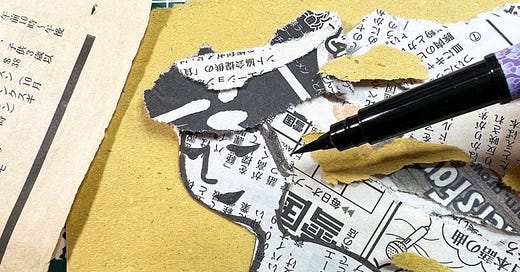



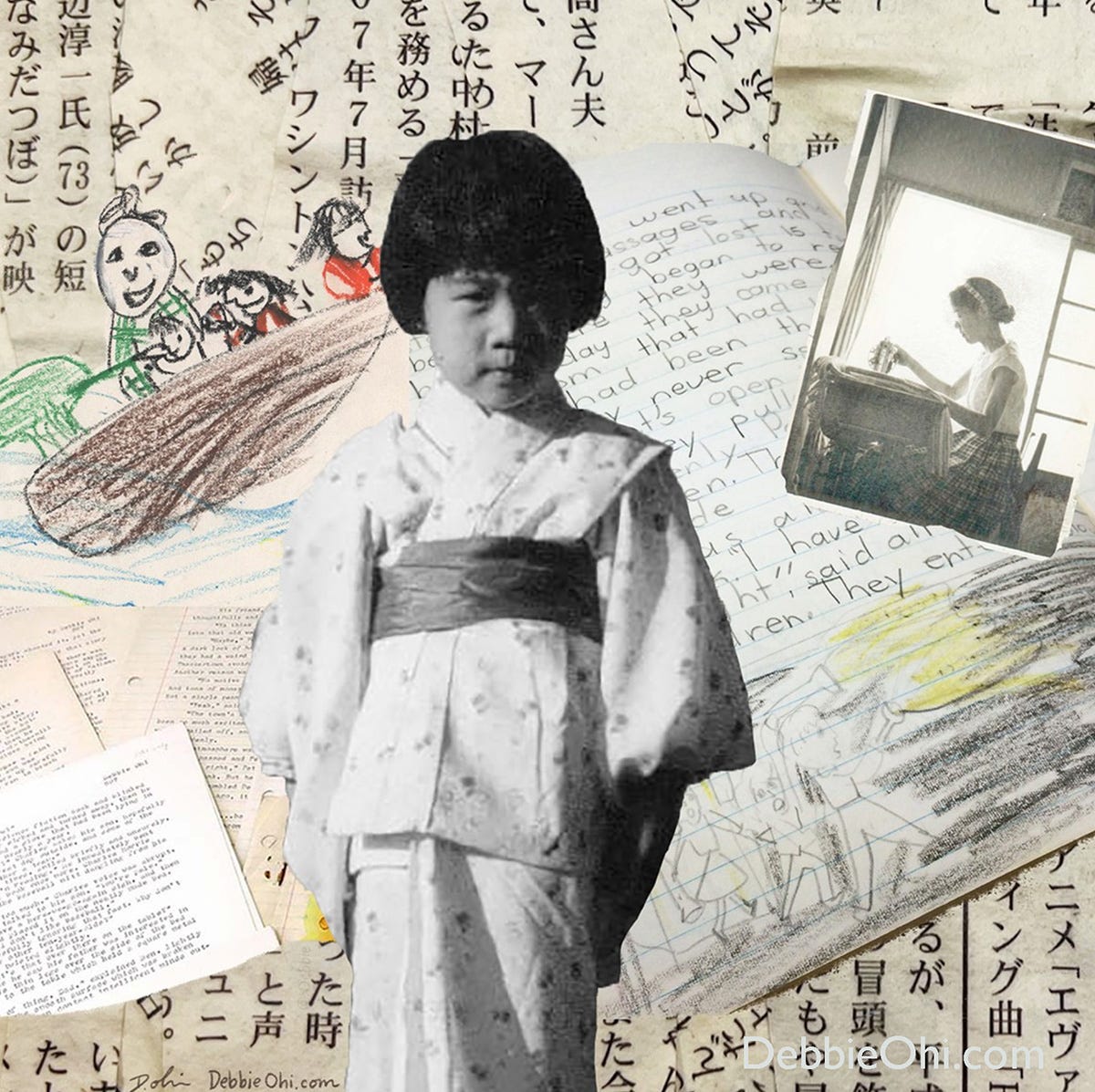
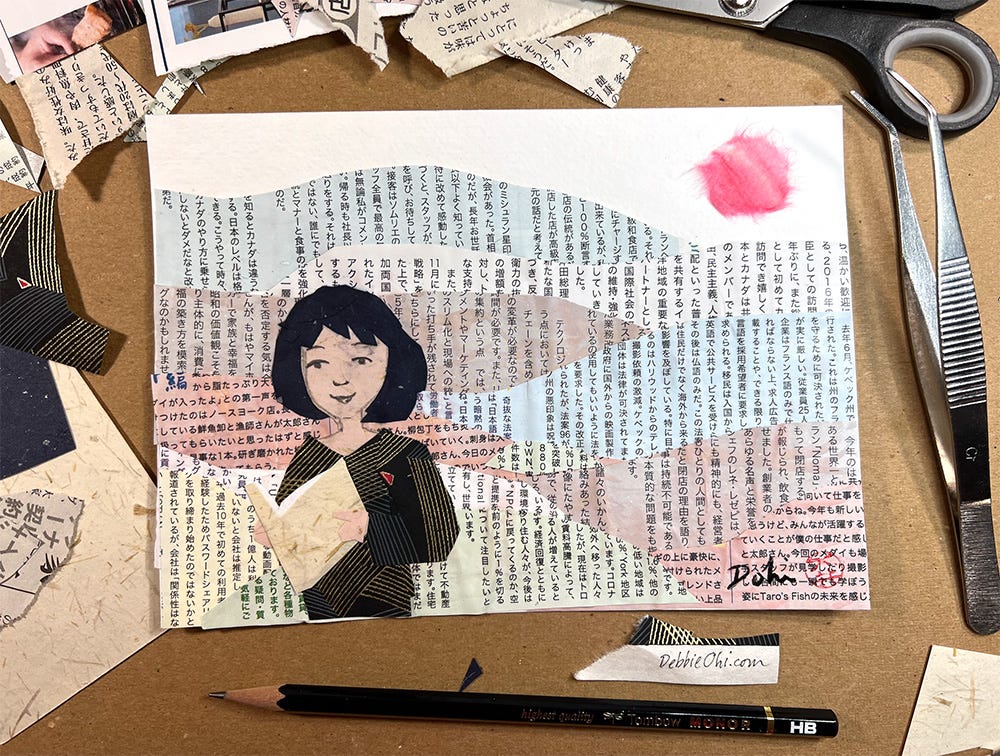

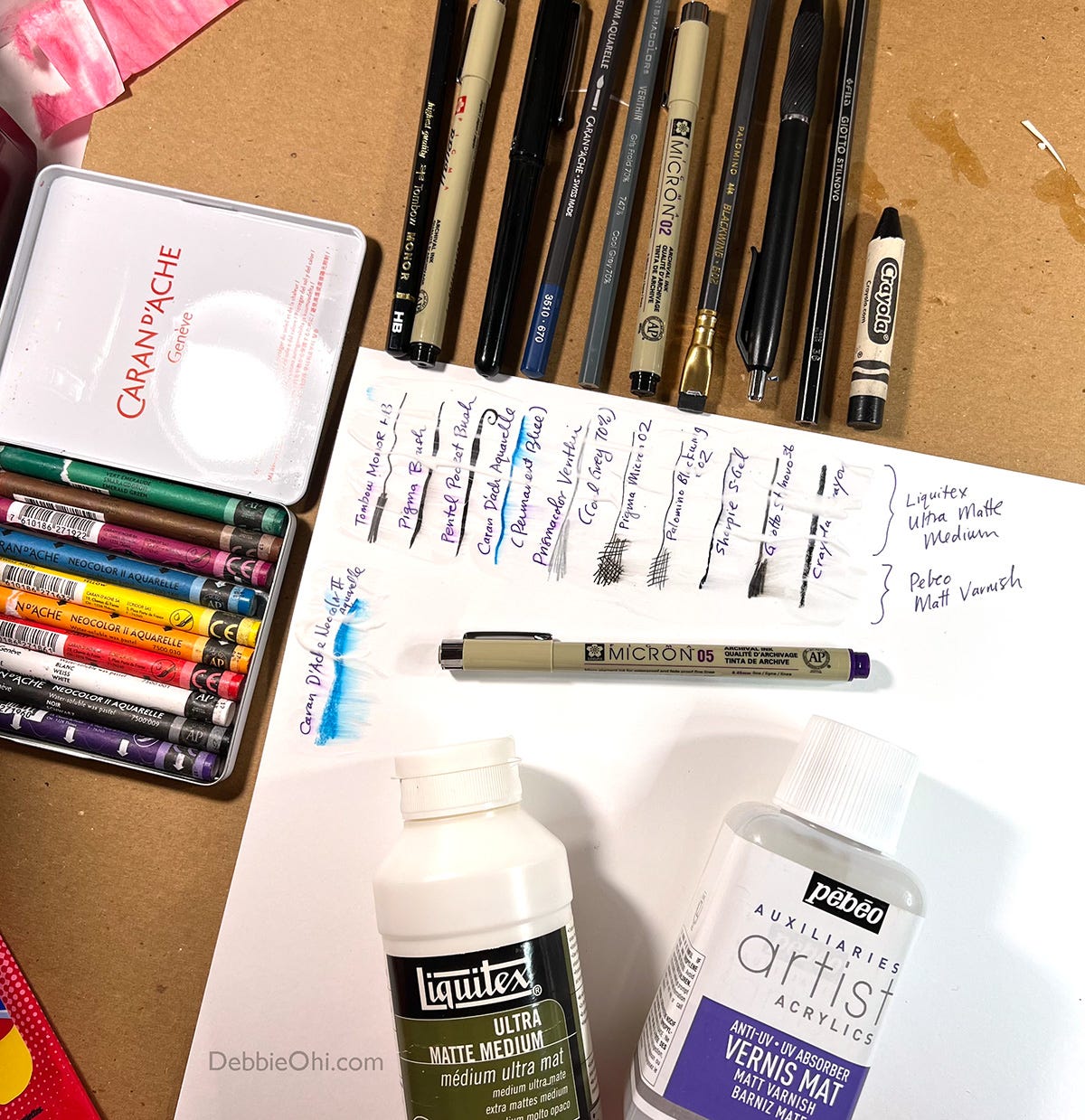
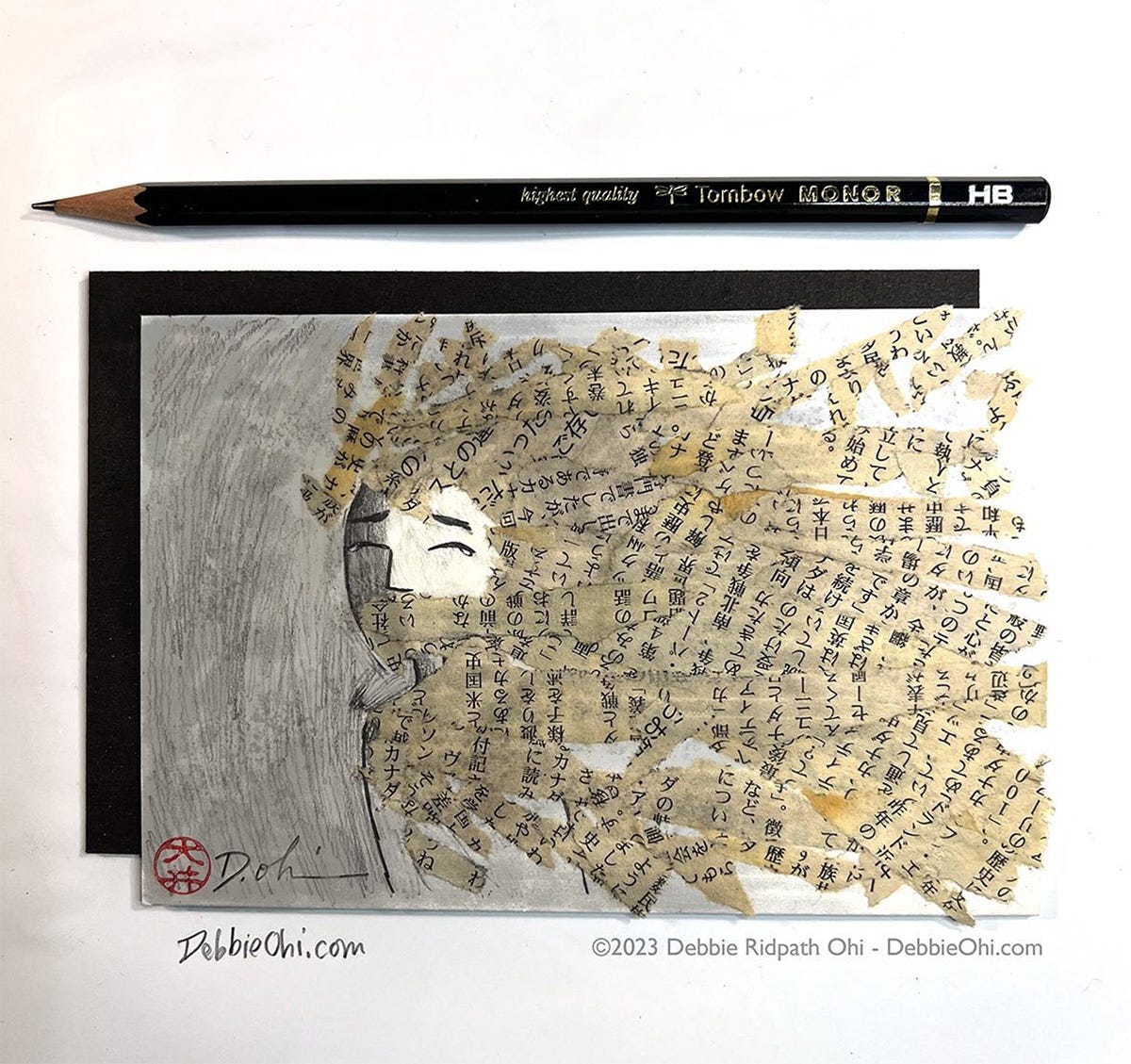
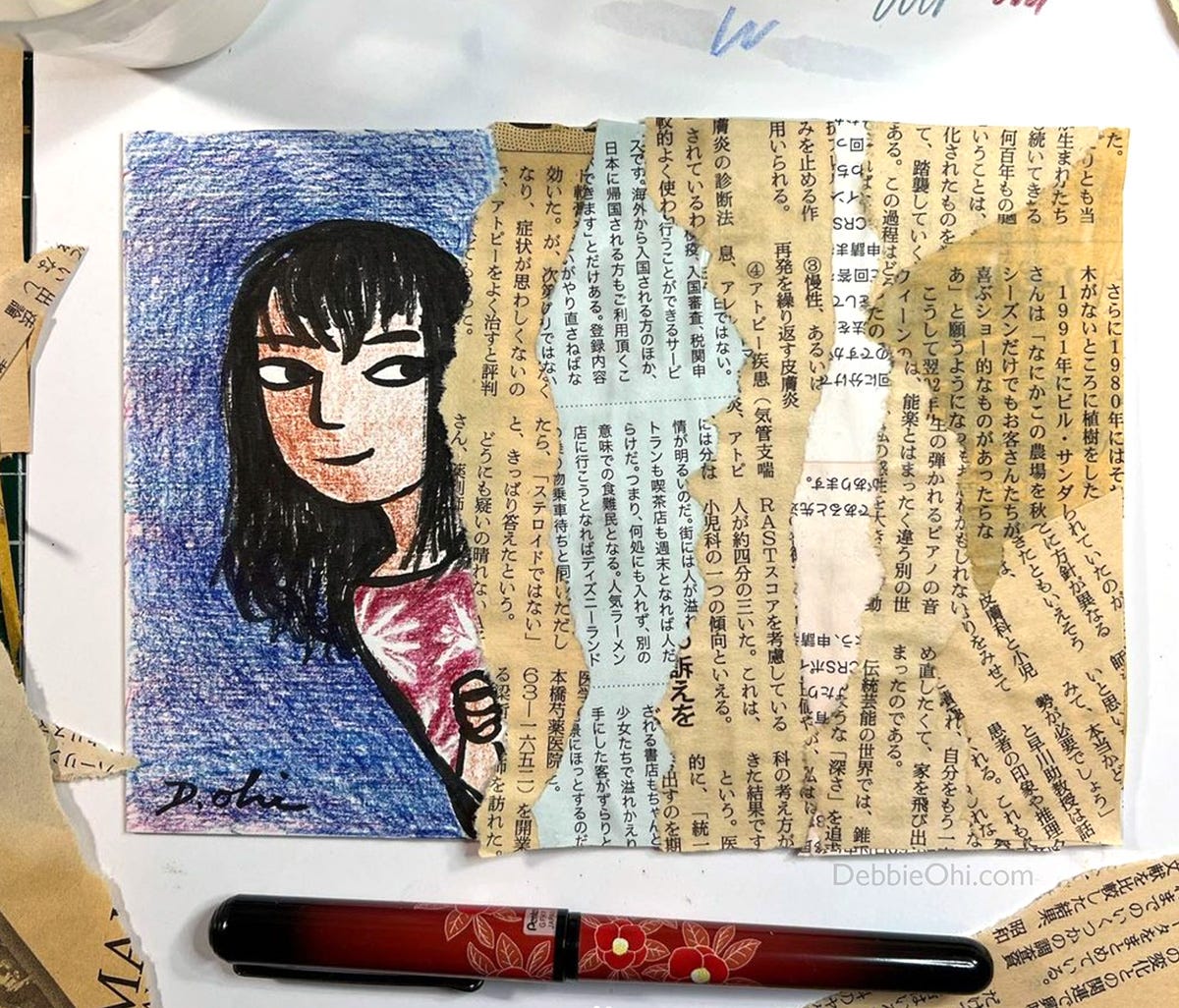
I draw. Almost every day. Sometimes I follow online prompts, other times I just draw what the little voice inside my head tells me to.
Oh, this was a good post, Debbie. When I started collaging in earnest years ago, I discovered ephemera (old prints: stamps, papers, etc) would not be wise to use in published works because of the copyright issues. Even scrapbooking papers were to be avoided, because they are licensed pieces of imagery. That's one reason I began creating my own painted papers.
I love that you are exploring collage, though. You are right that it frees you up into exploration, and texts of all kinds are a fabulous element. I guess they way around it would be to write things yourself, but I'm not sure it's the same. I know I love using pages out of an old dictionary when I work because the pages I choose to incorporate hold a meaning for me, and there is a kind of magic in that.